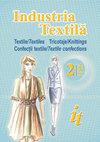非侵入性分析方法在文物研究中的应用
IF 0.9
4区 工程技术
Q3 MATERIALS SCIENCE, TEXTILES
引用次数: 0
摘要
民族志遗产纺织品可能面临风险,特别是与储存和暴露区域的小气候密切相关的各种因素。根据欧洲目前预防虫害、减少虫害和应对文化遗产侵扰/污染的趋势,本研究的研究方向旨在调查一些由天然纤维(即棉花)制成的80–100年左右的女性服装的退化情况。在本文中,在制定预防性或永久性保护策略时,考虑了一个重要方面,即三件衬衫的面料特征。因此,通过使用不同类型的分析来确定一些物理和结构特征:FTIR光谱,棉花特有的光谱;微生物分析显示,存在枯草芽孢杆菌、放射性根瘤菌、金黄色葡萄球菌和化脓性链球菌,它们对具有正常免疫系统功能的人类不具有致病性或毒性。本文章由计算机程序翻译,如有差异,请以英文原文为准。
Non-invasive analytical methods applied in the study of cultural
heritage artefacts
Ethnographic heritage textiles may be subject to risks generated in particular by various factors in close connection with
the microclimate of the storage and exposure areas. In accordance with the current European trends of pest prevention
and reduction and response to the infestation/contamination of the cultural heritage, the research direction of this study
aimed at investigating the degradation of some women’s clothing items, around 80–100 year-old, made of natural fibres,
namely cotton. Throughout this paper, an essential aspect was taken into account for establishing a preventive or
curative conservation strategy, namely the characterization of the fabric from which the three shirts are made. Thus,
some physical and structural characteristics were determined by making use of different types of analyses: FTIR
spectroscopy, the spectra specific for cotton; the microbiological analyses showed the presence of Bacillus subtilis and
Rhizobium radiobacter, Staphylococcus aureus and Streptococcus pyogenes, which are not considered pathogenic or
toxigenic to humans with the normal function of the immune system.
求助全文
通过发布文献求助,成功后即可免费获取论文全文。
去求助
来源期刊

Industria Textila
工程技术-材料科学:纺织
CiteScore
1.80
自引率
14.30%
发文量
81
审稿时长
3.5 months
期刊介绍:
Industria Textila journal is addressed to university and research specialists, to companies active in the textiles and clothing sector and to the related sectors users of textile products with a technical purpose.
 求助内容:
求助内容: 应助结果提醒方式:
应助结果提醒方式:


